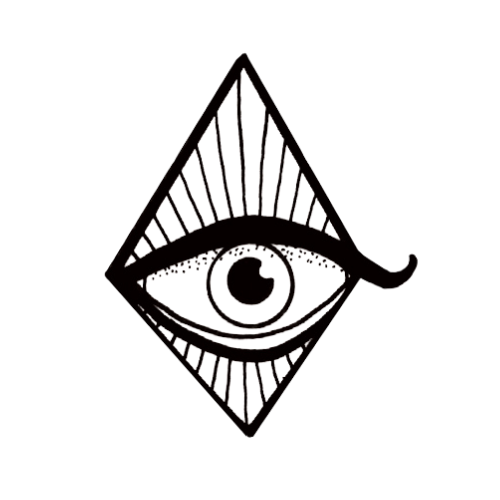As the autumnal hues paint our surroundings and the cool, brisk winds caress our cheeks, we are once again drawn to the mystical allure of Samhain traditions. Among these age-old practices, the enchantment of the Witch's Torch and the eerily illuminated faces of carved pumpkins and turnips stand out as timeless symbols. I invite you to join me on a brief journey into their origins and connections to the ancient festival of Samhain.
The Samhain Connection
Samhain, celebrated from the evening of October 31st to the evening of November 1st, marks the end of the harvest season and the beginning of winter. It was believed by the Celts that during this time, the veil between our world and the spirit realm was thinnest, allowing spirits to freely cross over. Rituals were performed, and bonfires lit, not just to mark the changing season but also to ward off malevolent spirits and guide the souls of the deceased.
The Tale of Will O' Wisp
Eerie apparitions known as Will o' the Wisps dance over bogs and fog-laden marshes, captivating imaginations for generations. These ghostly lights, whether named spooklights, hinkypunks, or pixie lights, share tales of leading unsuspecting souls into danger.
While the interplay of organic decay, water vapors, and bioluminescence from microorganisms might explain their glow, legends ran deep before science's lens focused on them. The practice of carving and bearing lanterns emerged as a protective measure against these mystic lights. Turnips, rutabagas, or potatoes, bearing haunting faces, became shields against the ethereal.
Among these legends, the tale of Jack of the Lantern stands out. Caught between worlds after a fateful deal with the Devil, he roams the earth with a lantern crafted from a root, lit by burning coal. Carved pumpkins, radiating a protective light, evolved into Jack O' Lanterns, guardians against the night's malevolent spirits.
The Lore of the Witch's Torch
The Witch's Torch, also known as the "Hag's Taper," is deeply intertwined with Samhain's essence, a festival marking life, death, and rebirth. This torch, historically used by witches and wise folk, illuminated the night, guiding spirits and warding off malevolence during Samhain when the realms between worlds were most permeable.
Its flame represents life's enduring spirit, even in the face of winter's impending embrace. As communities once lit Samhain bonfires, torches kindled from these fires carried the protective energies to individual households, binding communities in shared safeguarding rituals.
Today, the torch remains a revered symbol during Samhain, connecting modern practitioners to ancestral wisdom, serving as a luminous guide through the season's profound mysteries. In its light, we find a bridge between past traditions and contemporary celebrations.
Crafting a Witch's Torch
The Witch's Torch, a sentinel of ancient wisdom and protection, draws its potency from carefully selected ingredients. Each component, chosen not only for its practicality but also for its symbolic resonance, enhances the torch's connection to Samhain and its protective qualities.
Ingredients
- Mullein Stalk
- Beeswax
- Dried Flowers of your choice
Energetic Properties of the Ingredients
- Mullein Stalk | At the heart of the torch lies the dried mullein stalk, also known as the "candlewick plant." Historically, mullein has been associated with protective and divinatory properties. Its tall, sturdy stalk symbolizes a bridge between the heavens and earth, making it an ideal conduit for spiritual energies. Moreover, its historical use in torches and candles for illumination during rituals and ceremonies gives it a special place in crafting the Witch's Torch.
- Beeswax | The pure beeswax serves as fuel, allowing the torch to sustain its flame. Beyond its practical application, beeswax carries with it the essence of the bee's industrious spirit and dedication. Bees, revered in many cultures for their role in pollination and life-creation, bring an energy of productivity, community, and growth. The wax, being a direct byproduct of their work, encapsulates this essence.
- Dried Flowers | Adorning the torch with dried flowers is more than an aesthetic choice. Each flower possesses its own unique energy and properties. Lavender might be used for peace and purification, roses for love and psychic powers, or marigold to honor the dead, especially relevant for Samhain. By choosing flowers aligned with one's intent, the torch becomes a more potent tool, channeling the energies of the flora into its light.
Instructions
- Harvesting | Find a dried mullein stalk. This plant, often known as the "candlewick plant," has been associated with torches for centuries.
- Preparation | Remove any leaves or seeds, ensuring you have a clean stalk.
- Adornment | Decorate the torch by embedding dried flowers onto its surface. These not only beautify the torch but can also imbue it with specific energies.
- Sealing | Melt beeswax and dip the mullein stalk into it. Once dried, the beeswax will act as a fuel, allowing the torch to burn slowly.
- Ignition | When you're ready, light the tip and let the Witch's Torch illuminate your Samhain night.
As we embrace the magic of this season, may the radiant glow of Witch's Torches and the hauntingly beautiful visages of carved pumpkins and turnips remind us of the rich tapestry of history and myth that envelopes Samhain. Here's to tradition, mystery, and the endless dance of light and shadow.

